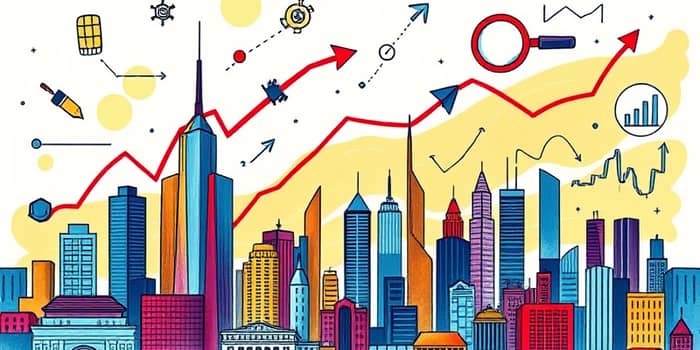
Economic indicators serve as essential guides, helping us navigate complex markets and policy decisions. By interpreting these signals correctly, individuals and institutions can build strategies that withstand uncertainty and capitalize on opportunities.
At their core, statistical metrics used to assess the economy reveal trends before, during, and after major shifts. These metrics are often published by government agencies such as the U.S. Bureau of Labor Statistics or tracked on platforms like the Federal Reserve Economic Data (FRED).
Indicators fall into three main categories:
No single indicator is perfect—most robust analyses combine these three types to form a robust and balanced analysis.
Monitoring a suite of indicators paints a richer, more accurate picture of economic health. Key signals include:
Specialized measures like the Lipstick Index or weekly jobless claims offer additional context, hinting at consumer sentiment or rapid shifts in the labor market.
Different stakeholders leverage economic clues to optimize outcomes:
Key interpretation tips include:
Charts, time-series graphs, and heat maps distill complex data into digestible visuals. Investors and analysts overlay recession bars on GDP and unemployment charts to spot turning points quickly.
Dynamic dashboards allow real-time tracking, helping reactive and proactive strategies to unfold seamlessly. Anomalies, like sudden retail sales spikes or unexpected inflation jumps, stand out when visualized properly.
Even the best data come with caveats:
Balancing optimism with prudence ensures that decisions anchored in data remain resilient under stress.
In 2007–2009, the inverted yield curve and rising unemployment foreshadowed the Great Recession. Likewise, rapid shifts in personal income and retail sales highlighted the recovery phase after the COVID-19 pandemic.
Looking forward, emerging indicators—like green energy investments or digital payment volumes—could become the next frontier in economic forecasting. Integrating new data sources with traditional measures underpins a forward-looking insight framework that adapts to evolving markets.
Economic indicators are not mere numbers; they are narratives of growth, contraction, and renewal. By weaving together leading, coincident, and lagging metrics, decision-makers gain a comprehensive view of economic health.
Whether you are an investor aiming for optimal timing, a policymaker crafting responsive measures, or a business leader steering operations, interpreting key indicators empowers you to act with confidence and vision.
References













